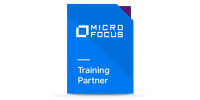This three-day course introduces students to advanced concepts of flow development and usage of the Operations Orchestration (OO) software along with some integration. OO is part of Cloud Automation solutions.
This course introduces best practices related to content authoring, structuring, and promotion. The execution order internal to OO is explained in detail. This course further focuses on advanced topics including using scriptlets, using Representational State Transfer (REST) to interact with OO Central, using Simple Object Access Protocol (SOAP) to interact with web services and using semaphores. A number of topics dive deeper into the use of OO to automate tasks, such as creating PDFs and interfacing with Subversion (SVN) from within OO flows.
A separate, full day topic discusses the use of CloudSlang, an open source, textual authoring tool that integrates with OO.
The course consists of focused, task-oriented lectures, text, and a series of detailed handson labs to teach the course material to the student.
The hands-on labs for this course starts with version 10.70 of the OO software and ends with version 10.80.
Upon successful completion of this course, you should be able to:
- Describe how to align flow authors to a common way to develop, document, package, and deliver OO 10.x content.
- Describe how OO executes workflows in terms of component execution order.
- Execute scriptlet methods in OO to manage flow data and flow execution
- Summarize the concepts related to semaphores and how to use them in OO
- Describe the use of the Source Control Management (SCM) tool and perform advanced tasks
- Extend OO through the use of external libraries
- Use the Web Services wizard and create flows using the newly generated operations
- Describe and use REST calls
- Write flows for Cloud Service Automation (CSA) lifecycle actions
- Describe integration content
- Create workflows using CloudSlang and execute them on OO Central
Audience/Job Roles
This course is intended for:
- Workflow developers
- System Administrators
- Automation Operators
- DevOps integrators
- Other personnel responsible for the implementation of OO

